This article explains how to connect a tablet to a TV using a wireless link. There are several methods that allow you to connect a tablet or smartphone to a TV without using any cables. Many of the popular apps support the Google Cast transmission protocol, which allows you to stream multimedia content to your TV and control its playback directly from a tablet or smartphone. Most models of Android tablets and smartphones integrate the functionality that allows you to share and transmit to a Smart TV or a special receiver connected to the TV what is displayed on the device screen. If your mobile device doesn't support screen sharing directly from the operating system, you may still be able to do so using a third-party app. IPad and iPhone users can use an Apple TV to stream multimedia content from their mobile device to the TV.
Steps
Method 1 of 4: Use an App that Supports the Google Cast Protocol
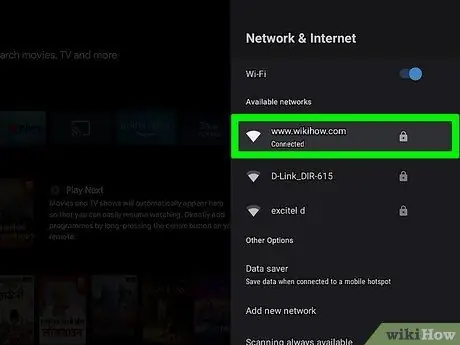
Step 1. Connect the TV and the tablet to the same Wi-Fi network
In order to take advantage of the function that allows you to transmit the contents displayed on the screen of a mobile device to a TV, the smartphone or tablet and the Smart TV must both be connected to the same LAN network.
If you are using an external receiver connected to the TV (for example a Google Chromecast, a Roku or an Amazon Fire) because you do not have a Smart TV, connect it to the same Wi-Fi network to which you connected the tablet or smartphone
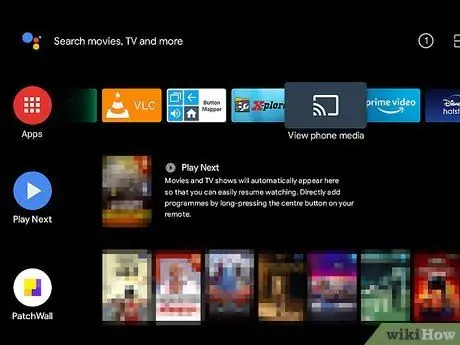
Step 2. Go to the Home screen of the TV
Use the remote control of the device and press the "Home" button.
If you are using an external receiver connected to your TV because you don't have a Smart TV, press the "Source" button on the remote and select the HDMI port the device is connected to
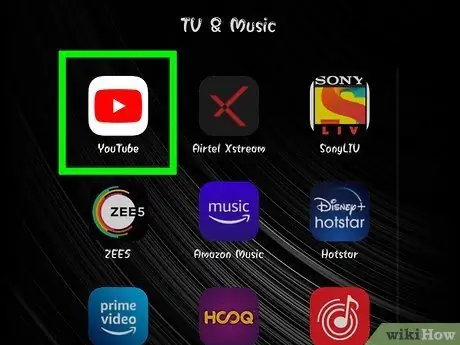
Step 3. Launch the smartphone or tablet app that supports the Google Cast protocol
The latter is supported by most of the popular and used apps, such as Netflix, YouTube, Spotify, Pandora, Google Photos, Google Play Music and many more.

Step 4. Select a video, picture or song
Depending on the application you are using, select the content you want to play. For example, it could be a YouTube video, a Netflix TV series, a Spotify song or any type of content offered by the app you are using.
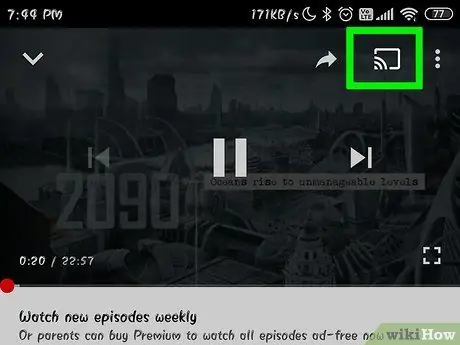
Step 5. Tap the "Cast Screen" icon
It is located in the upper right corner of the app window. It features a stylized screen with the Wi-Fi connection symbol visible in the lower left corner. The list of devices you can cast to will be displayed.
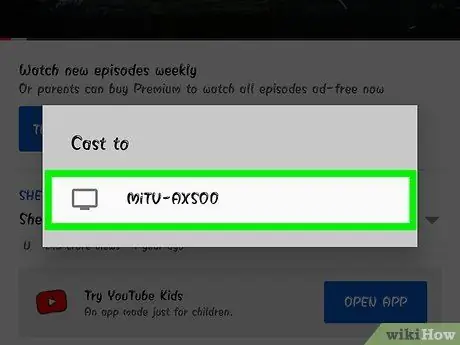
Step 6. Select the device to use
All compatible devices connected to the same wireless network to which the tablet or smartphone is connected will be present in the list. You can choose a Smart TV, a wireless receiver connected directly to the TV or a video game console. Wait about a minute for the mobile device to connect to the TV, then you can use it to control content playback.
To stop casting, tap the "Cast Screen" icon again in the upper right corner of the screen and choose the "Stop Mirroring" option
Method 2 of 4: Using the Screen Mirroring Function on Android
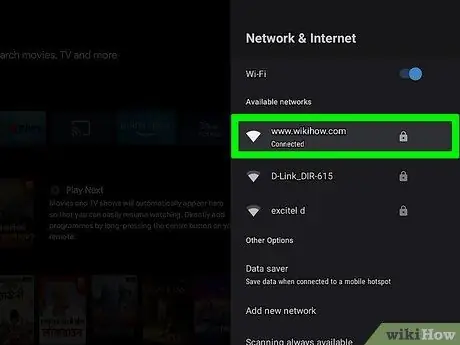
Step 1. Connect the TV and the tablet to the same Wi-Fi network
In order to take advantage of the function that allows you to transmit the contents displayed on the screen of a mobile device to a TV, the smartphone or tablet and the Smart TV must both be connected to the same LAN network.
If you are using an external receiver connected to the TV (for example a Google Chromecast, a Roku or an Amazon Fire) because you do not have a Smart TV, connect it to the same Wi-Fi network to which you connected the tablet or smartphone

Step 2. Select "Screen Mirroring" as the signal source on your TV
Press the "Source" button on your TV remote until you have selected the "Screen Mirroring" option.
- Some Smart TV models implement this feature through the use of an app, rather than in the form of a signal input source. If this is the case, press the "Home" button on the remote control to bring up the Home screen of the TV.
- If you are using an external receiver connected to your TV because you don't have a Smart TV, press the "Source" button on the remote and select the HDMI port the device is connected to.
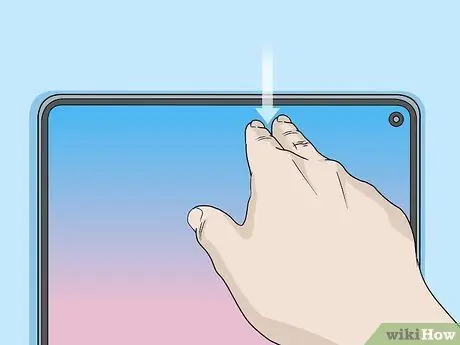
Step 3. Swipe two fingers down the screen from the top edge
The notification panel will appear.
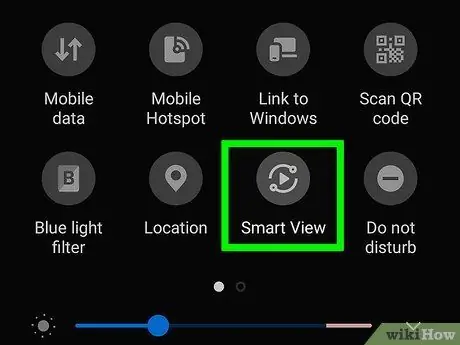
Step 4. Select the Screen Mirroring option or Smart View.
It features a stylized TV screen icon with an arrow or the Wi-Fi connection symbol visible on the left side. Depending on the model of tablet or smartphone you are using, the option shown may be called either "Smart View" or "Screen Mirroring".
- To stop streaming content to your TV, tap the "Smart View" or "Screen Mirroring" icon, then choose the "Stop Mirroring" or "Disconnect" option.
- The "Screen mirroring" function is not available on all Android tablets and smartphones. If your device doesn't support it, you may still be able to use the TV as an external monitor through the use of a third-party app.
Method 3 of 4: Using a Third Party App on Android
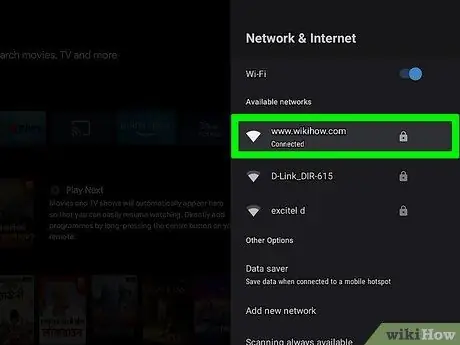
Step 1. Connect the TV and the tablet to the same Wi-Fi network
In order to take advantage of the function that allows you to transmit the contents displayed on the screen of a mobile device to a TV, the smartphone or tablet and the Smart TV must both be connected to the same LAN network.
If you are using an external receiver connected to the TV (for example a Google Chromecast, a Roku or an Amazon Fire), because you do not have a Smart TV, connect it to the same Wi-Fi network to which you connected the tablet or smartphone
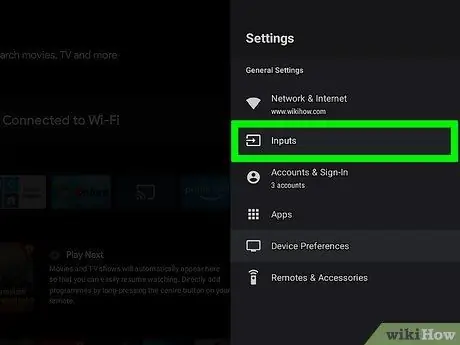
Step 2. Select "Screen Mirroring" as the signal source on your TV
Press the "Source" button on your TV remote until you have selected the "Screen Mirroring" option.
- Some Smart TV models implement this function through an application, rather than in the form of a signal input source. If this is the case, press the "Home" button on the remote control to bring up the TV Home screen.
- If you are using an external receiver connected to the TV, because you do not have a Smart TV, press the "Source" button on the remote control and select the HDMI port the device is connected to.
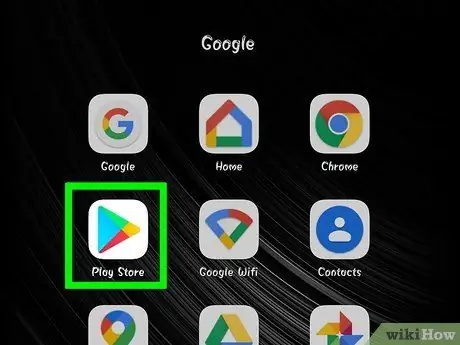
Step 3. Access the Google Play Store by tapping the corresponding icon
It is characterized by a multicolored triangle with the vertex facing right (remember the symbol of the "Play" button).
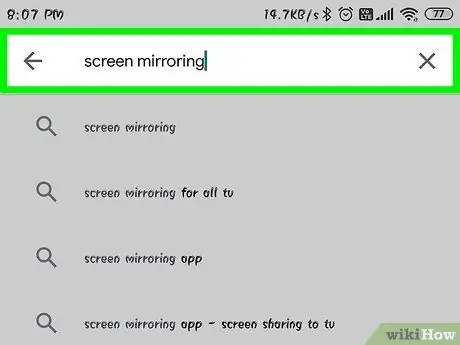
Step 4. Type the keyword Screen Mirroring into the search bar
The latter is located at the top of the screen.
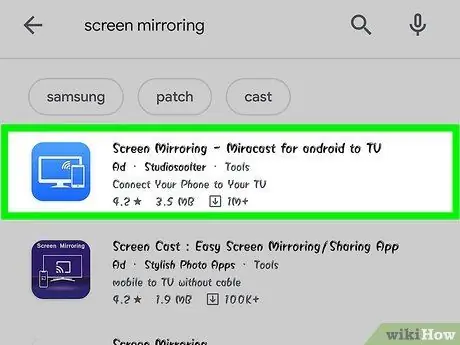
Step 5. Select an application
Within the Google Play Store, there are several apps that support the "screen mirroring" function. Some of them, such as "Samsung Smart View" and "Screen Mirroring for Sony Bravia TV", have been created to work only with Samsung and Sony proprietary TV sets. Other applications, such as "Miracast" and "Screen Mirroring" by ImsaTools, support full screen sharing, but are only compatible with certain brands of TVs. Applications such as "All Share" and "Xcast" allow you to stream images, videos and audio files stored on your mobile device to your TV.

Step 6. Press the Install button
After choosing the Google Play Store app you want to use, press the green "Install" button under the app name.
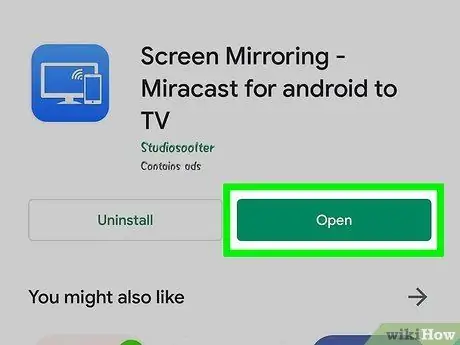
Step 7. Launch the app
You can touch the corresponding icon that appeared on the device's Home at the end of the installation or you can press the green "Open" button that appeared on the Google Play Store page.

Step 8. Close all advertisements that have appeared on the screen
Most of the apps that support "screen mirroring" in the Google Play Store are free. However, the developers support themselves financially through advertisements. If a banner ad appears, tap the "Close" or "Close" link or select the "X" icon located at the top of the screen.
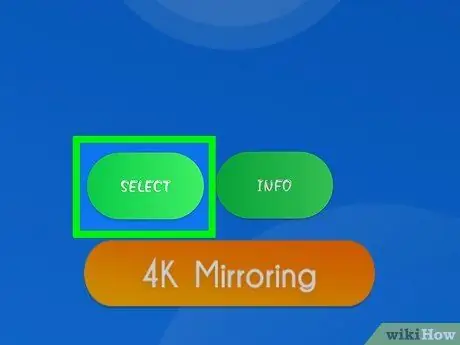
Step 9. Press the Start button or the "Cast" icon
The latter is characterized by a stylized TV screen and the Wi-Fi connection symbol visible in the lower left corner. It is used by apps like "All Share" and "XCast". Other programs such as Imsa Tools "Screen Mirroring" simply show a large "Start" button.
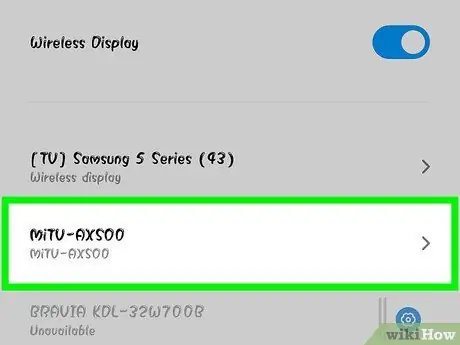
Step 10. Select your TV
After launching the app and streaming content, a list of all compatible devices connected to your Wi-Fi network will be displayed. If your TV is compatible with the "Screen Mirroring" feature, it will appear in the list. Wait a few minutes for the device to connect to the TV. Applications such as "Screen Mirroring" by ImsaTools are able to faithfully reproduce the content displayed on the tablet screen on the TV.
- If you are using "All Share" or "Xcast", press the "☰" button located in the upper left corner of the screen after the device has connected to the TV. At this point choose the "Photo", "Video" or "Audio" option from the menu that appears, then choose the image, video or audio you want to stream to your TV.
- To stop streaming, tap the "Cast" icon and choose the "Disconnect" option.
Method 4 of 4: Using an Apple TV and iPad
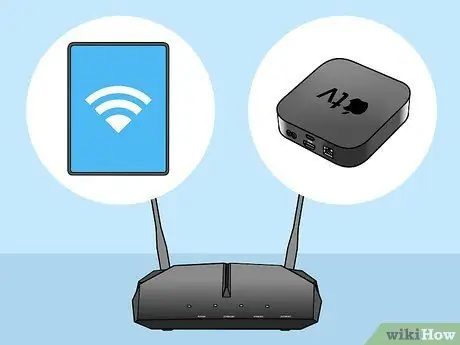
Step 1. Connect iPad and Apple TV to the same Wi-Fi network
To be able to stream content on your iPad screen to your TV, your Apple TV and iOS device must be connected to the same Wi-Fi network.
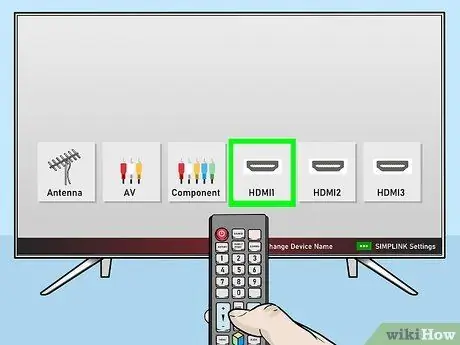
Step 2. Select the video input port of the TV you connected the Apple TV to
Use the remote's "Source" or "Input" button to select the HDMI port your Apple TV is connected to.
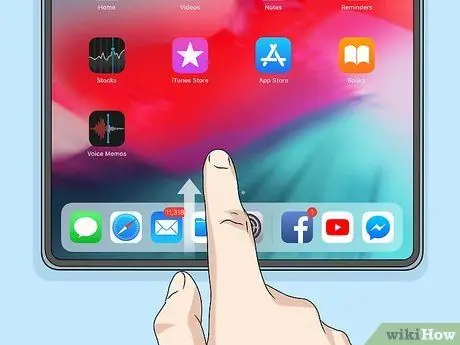
Step 3. Slide your finger across the iPad screen up from the bottom edge
The "Control Center" will be displayed.
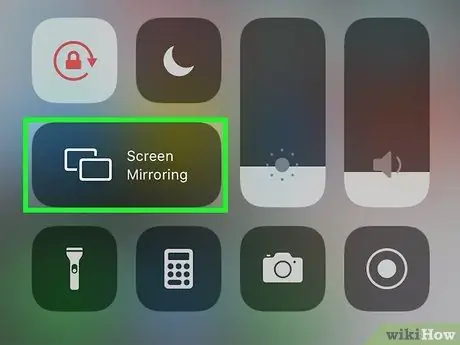
Step 4. Select the Duplicate Screen icon
It features a stylized TV screen with an arrow at the bottom. You'll see a list of all Apple TVs connected to the Wi-Fi network your iPad is connected to.
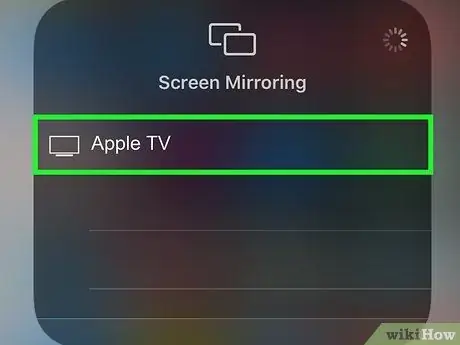
Step 5. Select your Apple TV
When the Apple TV you want to use to stream your iPad screen appears in the list of available devices, select it to be able to use it.

Step 6. Enter the security code on your iOS device
If an authentication code appears on the TV screen, type it on your iPad or iPhone. At this point, the content displayed on the iOS device screen will also be shown on the TV.






